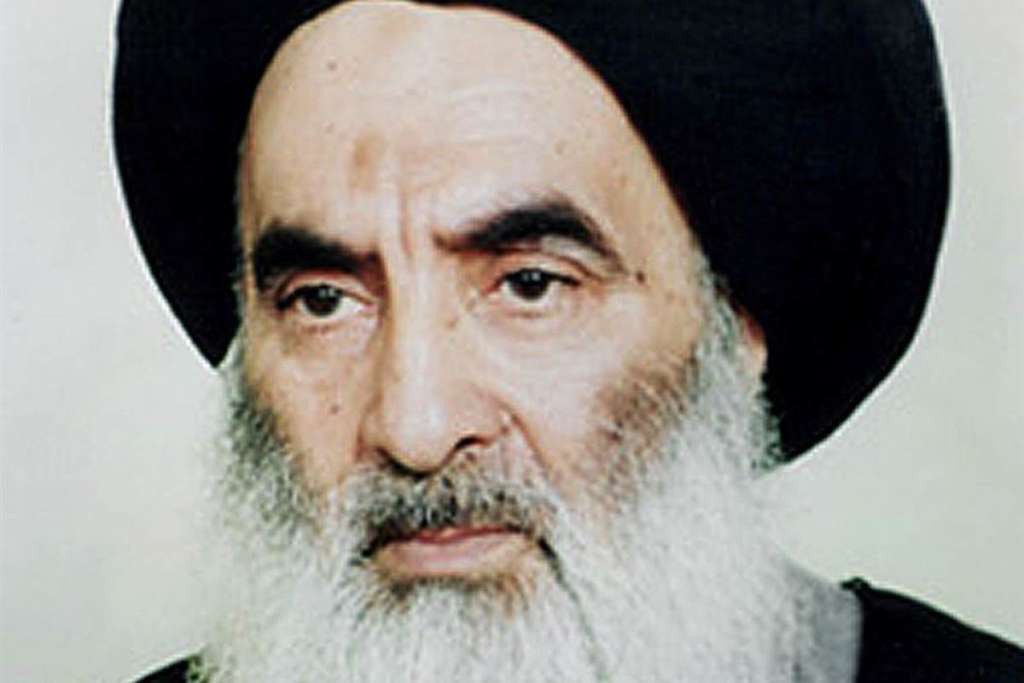London – The public scene in both Iraq and Iran raises many question marks on the future of religious authority amid recent reports on the health conditions of Ali Khamenei, supreme leader of the Islamic Revolution in Iran and Ali al-Sistani, the most eminent religious authority in Najaf, Iraq.
In fact, the Shi’ite religious authority in Iran has taken more momentum than in Najaf since the revolution in 1979. Religious authority in Tehran, also known as “Wali al-Faqih”, the religious and popular authority which has been considered the deputy of the Awaited Imam (Montazar), has become a competitor for other authorities.
In Iran, religious authorities differ from other countries; they come by appointment like what happened with Khamenei after the death of Ayatollah Khomeini in 1989, to play the role of both religious and political leaders. It is worth noting that many Shi’ite authorities do not follow the Guardianship of the Islamic Jurist known as “Wilayat al-Faqih”.
Historical Review
Since the foundation of the Shi’ite religious authority in Bagdad by Mohammad bin Mohammad al-Noaman in 413 hegiras, Noaman, also known as Sheikh Al-Mufid, was an Arab man who belonged to a region which didn’t witness disagreements on the succession of the sect’s reference.
After the death of Sheikh Al-Mufid and Al-Sherif Murtada, the religious authority was transferred to Najaf, and then re-founded in 448 hegiras.
After the death of Al-Khoei
Before the Iranian revolution, Abu Qassem Al-Khoei served as the religious authority in Najaf but following his death – conflicts on his successor remarkably emerged; Iraq sought to support the selection of an Arabian authority, however, it failed in fulfilling its goal because such post depends on the level of religious knowledge and acquired sciences and not on the nationality of the figure. After Khoei, Sayed al-Sabzawari served as the Religious authority of Najaf.
Sistani
Sistani took over the role as a religious authority after the death of Sabzawari – as circumstances were very hard following the assassination of two important nominees for the authority.
Iranian Ali al-Sistani never left Najaf since 1951 until today, except for a few times where he paid a six-month visit to Iran, traveled two times to perform pilgrimage, and visited Britain in a medical treatment trip.
No “Wilayat al-Faqih” in Najaf
All the Hadith texts and Fatwas in Najaf support a civilian state in Iraq, which does not correspond with the idea of “Wilayat al-Faqih” or with a religious state sought today by Islamist parties in Iraq. Therefore, the selection of a nominee from the Islamic Daawa Party like Al-Shahroudi or Al-Hae’ri, who follow the Iranian “Wilayat al-Faqih” will complicate the Iraqi arena. Yet, Iran seeks to appoint a cleric with similar views once the religious authority in Iraq becomes vacant. Sistani has always rejected a religious state in Iraq, as per its political role, the religious office said Sistani does not seek a position in the rule or the political authority; it also stressed the importance of separating clerics from administrative and executive positions and responsibilities.
Future Challenge
Ayatollah Sistani has reached his 87th year, which compelled many people to talk about his successor amid competition among different authorities that are politically influenced by Wilayat al-Faqih. Iran does not deny its ambitions in appointing a figure who aligns with it in politics and intellect. However, it seems that the three candidates who are nominated for Sistani’s succession have no Iranian inclinations.
Religious parties in Iraq also have their own references like students of Muhammad Baqir al-Sadr (executed in 1980) and Mohammad Mohammad Sadik al-Sadr (murdered in 1999) who introduce themselves as religious authorities and Ayatollahs – some of them oppose the current religious authority and denounce their effectiveness.
On another hand, each jurist must acquire moral and materialistic support along with educational, scientific, and knowledge conditions. Institution of Imam Khoei has always strongly supported the religious authority of Sistani in Iraq and abroad.
Alternates….
Muhammad Baqir al-Hakim (murdered in 2003) could have been considered as a suitable alternate for Sistani if he was still alive today. For instance, he returned from Iran and dedicated his time and efforts to the religious authority supported by the background of his father and family in Najaf. After he returned from Iran, Hakim called for a civilian state in Iraq, however the dream ended with his assassination in August 2003.
Other possible alternates are Mohammad Ali al-Yacoubi from Al-fadhila Party (Islamic Virtue Party) who introduces himself as an authority but cannot be seen among suitable competitors. There are also Mohammad Kazem al-Hae’ri and Mahmoud al-Hashimi al-Shahroudi; the first is an Iranian born in Iraq and the other was arrested in Iraq in the 70’s then migrated to Iran – both of them align with the Wilaya in Iran.
Change of Circumstances
Circumstances of religious authorities in Iraq have changed along with the whole shift in the Iraqi social environment, which has been dominated by chaos amid the absence of control. It is worth noting that Sistani has succeeded in protecting the religious authority from politics, but things will defer with his successor as the suggested candidates do not possess his knowledge.
Finally, the Shi’ite Religious authority in Iraq is expected to see a sharp crisis in the post-Sistani phase especially that Iran has put many efforts to appoint a religious authority that supports the Wilaya concept – which is expected to destroy Shi’ites in Iraq.
